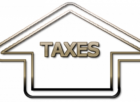Skat Årsopgørelse: A Deep Dive into Understanding and Navigating Tax Assessment

Introduction
The annual tax assessment, commonly known as “skat årsopgørelse” in Denmark, is a crucial process that every taxpayer must go through. This article aims to provide a comprehensive overview of this topic, covering all relevant aspects for individuals who are interested in understanding more about tax assessments. Whether you are a seasoned investor or a finance professional, this article will equip you with the necessary knowledge to navigate the complexities of “skat årsopgørelse.”
Understanding Skat Årsopgørelse

Skat årsopgørelse is the Danish term for the annual tax assessment, where the Danish Tax Agency (SKAT) evaluates and calculates the tax liability for each taxpayer based on their income, deductions, and other relevant factors. This assessment is crucial in determining the taxpayer’s financial obligations to the government. It provides a summary of the taxpayer’s financial activities throughout the year, allowing them to reconcile their tax obligations accurately.
Key Elements of Skat Årsopgørelse
To understand skat årsopgørelse better, it is essential to familiarize oneself with some of its key elements. These elements include:
1. Income: The tax assessment takes into account all sources of income, such as salary, rent, business profits, and capital gains. SKAT requires individuals to report their income accurately to ensure proper tax calculation.
2. Deductions: Deductions play a significant role in tax assessments as they lower an individual’s taxable income. Examples of common deductions include expenses related to employment, freelance work, mortgage interests, and various personal expenses.
3. Nordic Tax Treaty: For individuals who have earned income from other Nordic countries, the Nordic Tax Treaty facilitates the proper allocation of tax payments between countries, ensuring fair taxation for cross-border earners.
4. Tax Credits: Tax credits serve as incentives to encourage specific behaviors or support vulnerable groups. Examples of tax credits in Denmark include child benefits, housing benefits, and employment-related benefits.
Historical Development of Skat Årsopgørelse
The evolution of skat årsopgørelse dates back to the early 20th century when the Danish tax system underwent significant reforms. The primary objective was to simplify the taxation process and enhance transparency. Over the years, several milestones have shaped the current state of tax assessment in Denmark. These include:
1. Introduction of Personal Income Tax (1903): Denmark introduced a personal income tax system to address the growing need for public revenues. This marked the foundation of skat årsopgørelse and laid the groundwork for subsequent developments.
2. Automation and Digitalization (1990s): With the advent of technology, tax assessments underwent a remarkable transformation. The Danish Tax Agency implemented various digital solutions to streamline the process, reduce errors, and improve overall efficiency.
3. Online Tax Filing (2005): As technology advanced, the Danish Tax Agency introduced online tax filing, allowing taxpayers to submit their information electronically. This advancement significantly simplified the tax assessment process and increased accessibility for taxpayers.
4. Ongoing Reforms: With a dynamic tax landscape, Denmark continues to make reforms to the skat årsopgørelse system. These reforms aim to enhance accuracy, reduce complexity, and align tax policies with changing socioeconomic realities.
Navigating Skat Årsopgørelse
For individuals who want to effectively navigate the tax assessment process, it is crucial to follow certain steps to ensure compliance and accuracy. Here are some key points to consider:
1. Gather All Relevant Documentation: Before starting the tax assessment process, gather all necessary documents such as income statements, expense receipts, and investment records. This will ensure that you have all the information needed to report your income and deductions accurately.
2. Familiarize Yourself with New Regulations: Stay updated with any changes in tax regulations to avoid potential discrepancies or missed opportunities for deductions or credits. The Danish Tax Agency provides comprehensive information and guidelines to assist taxpayers in understanding these regulations.
3. Utilize Digital Tools: Take advantage of the digital tools and resources provided by the Danish Tax Agency. These tools simplify the tax assessment process, provide real-time assistance, and reduce the likelihood of errors.
4. Seek Professional Advice: When in doubt or faced with complex financial situations, consider seeking professional assistance from tax advisors or accountants. They can provide tailored advice and ensure compliance with tax regulations.
Conclusion
Skat årsopgørelse is a crucial process for every taxpayer in Denmark. Understanding its key elements, historical development, and effective navigation strategies is essential for investors and finance professionals. By following the guidelines outlined in this article and leveraging available resources, individuals can ensure compliance with tax regulations, optimize deductions, and mitigate any potential issues related to their annual tax assessments. Stay informed, stay proactive, and navigate skat årsopgørelse with confidence.











